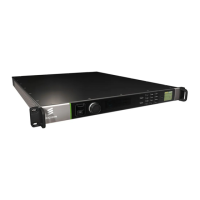8.9.4 Limitations and Specifications of Remote Server Logging
8.9.4.1.1.1 Saved Configurations and Remote Server Logging
Saving a configuration via the Support page or the Stored Configurations page
will save the current remote logging settings. Loading or restoring a configuration
will update the remote logging settings.
8.9.4.1.1.2 Reboot and Upgrade
Remote server logging settings are retained after reboot.
Remote server logging settings created via the web user interface or front panel are
retained after a unit software upgrade. Changes made by directly editing the logging
configuration file will be lost.
8.9.4.1.1.3 Log Transmission
Logs are transmitted using UDP. Delivery is not guaranteed.
Changing the configuration of remote server logging causes the internal logging
process to be stopped and restarted. This is recorded in the system log.
Some logs may be lost during a remote server restart, i.e. a change of configuration.
8.9.4.1.1.4 User Configuration Logging
When configuration logging is selected, configurations are logged as follows:
• Only configuration differences (i.e. the changes made to the default
configuration) are recorded in detail, due to the large volume of data which
would be generated otherwise.
• The data is not recorded in the local system log.
• The values of sensitive data such as BISS key settings and passwords are
filtered out. The change event is recorded.
• If authentication is enabled (see Chapter 6Error! Reference source not
found.), the name of the user is included in the message.
• Changes made via the front panel are always marked with the user name
‘front_panel’.
8.10 Calling a Service Engineer
If you cannot resolve a problem with your equipment using the information provided
in this chapter, or if you experience technical or operational difficulties, please do not
hesitate to contact us to request assistance.
There is a lot of information you can give us that will enable us to diagnose your
problem swiftly. When contacting us please provide the following:

